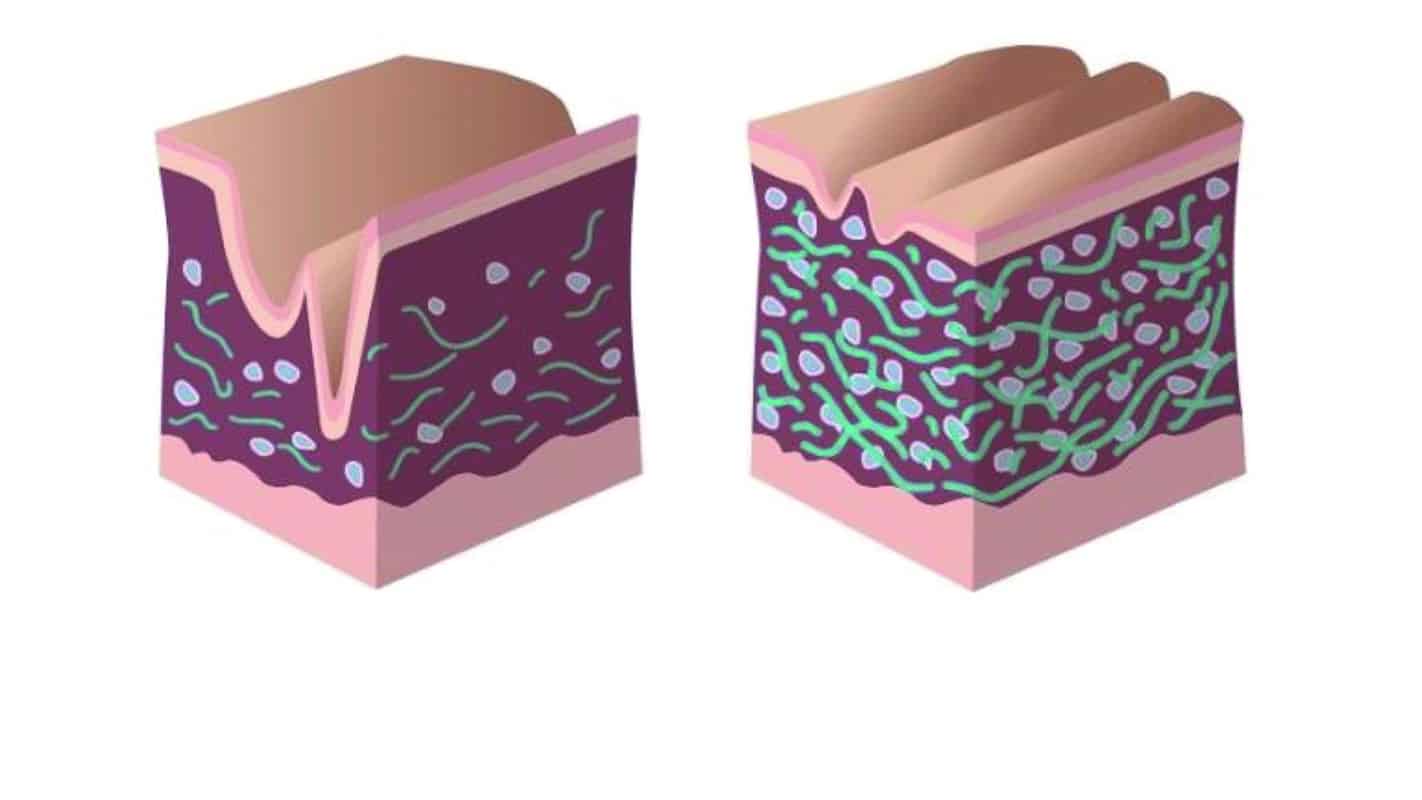
Richard Passwater, Jr. has been involved with silicon supplementation and its research for more than 16 years. He is the education director for the Belgium-based dietary supplement research and dietary supplement production company, Bio Minerals NV.
Collagen-based tissues such as skin, tendons, ligaments, cartilage, and bones are continually being remodeled (broken down and rebuilt) all throughout someone’s life.
During the rebuilding phase of the remodeling process, specialized cells called fibroblasts build new collagen. Some fibroblasts cells have more specific names such as osteoblasts in bones, tenocytes in tendons, chondrocytes in cartilage.
The remodeling rate is subject to quite a few bio-individuality variables, both enteral (or intrinsic) and external (or environmental.) With some tissues, such as bone, I frequently hear remodeling rate statistics such as someone has a completely new skeleton every 7 to 10 years. With other tissues there is much less agreement how quickly the remodeling occurs.
For the sake of having a starting place for the discussion, I like using the data below in Table 1, calculated by a group of European researchers lead by Prof. Enrique Melendez-Hevia showing the estimated collagen content in 7 different tissues and the maximal daily turnover:
| Organ | Estimated Collagen Content, grams | Fractional Synthesis % / day | Net Collagen Synthesis g/day |
| Skeleton | 1,640 | 2.64% | 43.3 |
| Skin | 1,390 | 2.00% | 27.8 |
| Muscle | 523 | 3.52% | 18.4 |
| Cartilage | 109 | 4.16% | 4.5 |
| Heart | 3.36 | 9.80% | 0.3 |
| Lung | 18.4 | 7.10% | 1.3 |
| Ligaments | 45 | 1.85% | 0.8 |
| Total | 3,729 | 97 |
Based on these figures, these researchers are estimating a person has about 3,729 grams (about 8.2 lbs.) of collagen collectively in their bones, skin, muscle, cartilage, heart, lungs, and ligaments. Furthermore, the researchers are estimating that a person must successfully make about 100 grams of healthy new collagen every day to properly remodel these tissues to keep them strong and healthy (1). One hundred grams may not sound like very much, but it’s a pound of new collagen that needs to be produced every 4.5 days.
Richard A. Passwater (RAP): What is the result of inadequate collagen production in skin?
Richard Passwater, Jr. (RPJr): Collagen makes up about 75% of the dry weight of healthy skin. Collagen gives skin its strength and thickness. And together with the closely related protein, elastin, gives skin its unique elasticity properties.
Skin collagen is also the structure reflecting light from the skin to give skin a healthy glow. As much as 90% of the light that hits the epidermis—the outermost layer of the skin—actually goes through it into the dermis. Collagen fibers reflect the light back outward creating radiance, luminosity, and glow.
In skin, collagen is accompanied by elastin, a protein also made by fibroblasts. Collagen is very strong. Pound for pound collagen is stronger than steel if you compare their tensile strengths. Elastin is not as strong as collagen but has tremendous recoiling ability. Elastin can stretch and recoil quite rigorously without being damaged. Generally, tissues that must expand and contract such as skin, lungs, and blood vessels have a higher concentration of elastin-to-collagen, compared to tissues only requiring strength and flexibility, such as bones.
I like to compare the roles of collagen and elastin in skin to the roles of cotton and spandex (a type of synthetic stretch fabric made from polyurethane fiber) in modern wrinkle-free clothing such as skinny jeans or golf pants. These clothes are often about 95% cotton, which gives the garment its thickness and strength, and have about 5% spandex, which allows it to stretch and keeps it wrinkle free.
In skin, collagen provides the thickness and strength and the elastin provides the elasticity. More and more, elasticity is being correlated with the depth of wrinkles, suggesting that the formation of wrinkles primarily results from the loss of elasticity (2).
The white fibers in Figure 1 represent collagen while the yellow coils represent elastin.

Unfortunately, when collagen and elastin levels decrease and/or the quality of the collagen and elastin lessens, skin becomes wrinkled, thinner, weaker, less elastic, more transparent and reflects less light. Please see Figure 2.

In skin, collagen provides the thickness and elastin provides the elasticity while reducing wrinkles.
RAP: What is the result of inadequate collagen production in bones?
RPJr: Healthy bones are about 30% collagen. Minerals such as calcium phosphate make up the other 70%.
Collagen fibers serve as the underlying bone framework. In bone the collagen fiber network is called “osteoid.” This framework gives bone flexibility and ability to absorb impact or energy. Bone researchers often call these attributes bone toughness (3).
Collagen also plays a second role in bone as well. Collagen fibers serve as the template— or the “binding sites” or “parking places” for calcium phosphate crystals to be deposited into. The more bone collagen fibers someone has, the more Bone Mineral Density (BMD) potential they have (3).
The collagen framework in bone is mineralized to give bone a defined shape and some rigidity. The minerals add some additional strength but, in my opinion, their main purposes in bone are to give the body shape or form and to serve as a solid structure for muscles to pull against to facilitate movement. Otherwise we would look more like a jellyfish and have limited independent movement potential.
I’ve heard one group of bone researchers go as far as suggesting that the quantity and quality of bone collagen likely determine about 80% of bone’s total strength.
Unfortunately, the loss of the quantity and/or quality of bone collagen results in weaker, less flexible bones with a higher fracture risk.
RAP: What is the result of inadequate collagen production in cartilage?
RPJr: Articular cartilage is found on the end of long bones to help reduce friction and to help bones glide instead of grind against one another during movement. Some joints such as the knee also contain a disk-shaped structure called a “meniscus” made from cartilage to help stabilize and absorb energy like a shock absorber. Both articular and meniscus cartilage structures are about 70% collagen.
The collagen in cartilage is slightly different than elsewhere in the body. In 1969, a research group documented that the collagen in cartilage has a different alpha-1 chain than collagen found elsewhere in the body. It was named collagen type-2 (4). More recently type-2 collagen has been found to have different molecular spacing and to dissipate compressive forces better. This is perhaps because it holds more water (50-100% more by some calculations) due to its structure and because of the proteoglycans such as chondroitin sulfate aggrecan, lubricin, decorin, biglycan, and fibromodulin to which it is bound.
I like to say type-2 collagen is more like type-1 than it is different. But clearly type-2 collagen is especially suited for its unique job.
Unfortunately, as collagen production in cartilage decreases, cartilage quantity and quality both decrease. As a result, cartilage structures become less able to reduce friction and cushion the joint during movement. This can result in cartilage fragments forming and floating away in the synovial fluid triggering inflammatory responses and bone spurs. The result is too often pain, inflammation, and reduced range of motion. This can result in a person moving less, which leads to a whole host of other health problems.
RAP: Would just eating more collagen-rich foods such as skin and bones—maybe more chicken wings—be the best approach?
RPJr: Maybe tasty, but not the best approach to making your own collagen. Collagen is a protein. And just like other proteins, cells must start building collagen from scratch using single amino acids. Then a team of enzymes need to be activated to further modify and “mature” the initial protein alpha-chains and procollagen structures formed by the fibroblasts into functional collagen.
Declining collagen production is much more of a complicated situation than when someone has declining vitamin B6 or calcium levels. In those cases, someone can make dietary changes or take supplements with B6 or calcium/vitamin D to immediately and directly remedy their deficiency.
When someone has declining collagen levels, unfortunately it’s more complicated than just eating collagen. As an example, the body is not capable of taking collagen fibers out of chicken wing skin and then weaving them into a ligament.
When someone eats collagen, the body digests the collagen—just like it digests other proteins—by breaking the collagen down into the amino acids it is comprised of and other protein metabolites such as pyruvate and keto glutamate.
So, in this regard, eating collagen can be helpful for people needing these additional amino acids (such as glycine and/or proline) in their diet.
Also, more recently, a theory is being promoted by many marketers of collagen peptide supplements. This as yet unproven theory claims that in some collagen peptide supplements, some of the peptides are not digested into their amino acid components in the gut but are instead absorbed into the bloodstream as peptides, especially if taken on an empty stomach. Then once in the body, these peptides can signal fibroblasts to try to make more collagen.
Generally, their theory is that specific peptides can “confuse” or “trick” the body into thinking it is experiencing a significant collagen breakdown which then triggers or signals the body to try to make more collagen. Sometimes, the researchers suggest specific peptides might signal the body to make more mRNA which would increase the body’s potential to make more collagen. There is debate regarding which peptides work better for which type of collagen production. Generally, it seems these groups are looking for peptides containing glycine and proline or glycine and hydroxyproline.
It is certainly an interesting area of research to follow. But currently I am a bit skeptical of this second proposed mechanism of action and think the peptides are likely broken down inside the body to their amino acid components as part of the procollagen recycling system or by other means. And that the hydroxyproline is then further broken down in a series of compounds leading to glyoxylate which can be used as a substrate for the body to make glycine (5).
But regardless of whether collagen is digested into amino acids or absorbed as peptides, eating collagen does not activate critical enzymes required to build mature collagen out of amino acids. The activation of these key enzymes is required to actually build new collagen and their activation requires vitamins and minerals.
RAP: Just how is silicon involved with keeping optimal amounts of collagen in both skin and bones?
RPJr: The important factor is silicon is required for the activation of critical enzymes needed to guide the assembly of amino acids to form the proteins making up the framework of skin and bone. Several critical enzymes can’t function without adequate levels of biologically active silicon.
RAP: Perhaps we should quickly review how the body makes collagen. Let’s take a break and continue in Part 3.
References
- Meléndez-Hevia E, De Paz-Lugo P, Cornish-Bowden A and Cárdenas M L 2009 A weak link in metabolism: the metabolic capacity for glycine biosynthesis does not satisfy the need for collagen synthesis; J. Biosci. 34 853–872] DOI 10.1007/s12038-009-0100-9
- Akazaki S, Nakagawa H, Kazama H, et al. Age-related changes in skin wrinkles assessed by a novel three-dimensional morphometric analysis. Br J Dermatol. 2002 Oct;147(4):689-95.
- Viguet et. al. (2006). Viguet-Carrin et al. The role of collagen in bone strength, Osteoporosis Int, 2006, 17(3), 319-36.
- Miller EJ, Matukas VJ. Chick cartilage collagen: A new type of a1 chain not present in bone or skin of the species. 1969. Proc Natl Acad Sci 64: 1264–1268.
- Wu et. al. Proline and hydroxyproline metabolism: implications for animal and human nutrition Amino Acids. 2011 Apr; 40(4): 1053–1063.










